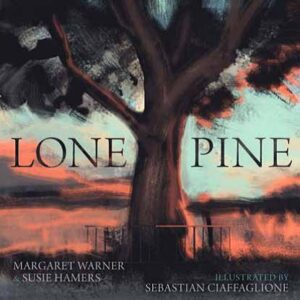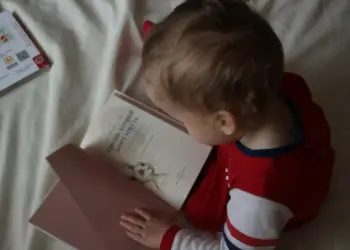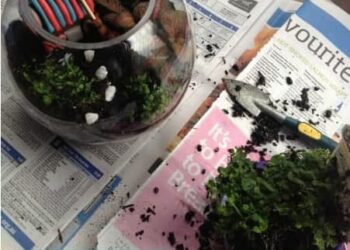The eerie opening page shows us the old pine tree that currently stands on the grounds of the Australian War Memorial. We are then taken back in time to read the story of this pine tree.
That story begins in August 1915, with the Battle of Lone Pine, and describes how pine trees were used by soldiers to cover their trenches.
When a soldier cannot find his brother at the end of the battle, he picks up a pine cone to send home to his mother, a keen gardener.
While coming to terms with the loss of her son, the mother keeps the pine cone in a drawer until she is ready to plant some of its seeds. She grows three pine saplings, but only two survive. A symbol of the sons who returned home to Australia and the one she lost.
The mother believes these pine trees need to be planted where people can be reminded of the Battle of Lone Pine. One is planted at Inverell (where the soldiers grew up as boys) and the other is planted at the Australian War Memorial in the October of 1934.
The pine trees become a symbol of pride, strength, and remembrance for fallen soldiers.
Brown and Warner have written a moving, yet gentle story which manages to tug at your heart but also fill it with hope and pride. Their words have been carefully chosen to tell an emotional and forgiving story that can be shared with children.
Sebastian Ciaffaglione’s beautiful and gentle illustrations are perfect for this story. The paintings are almost life-like, particularly the illustration of the mother holding the sapling between her gloved hands. There is also a wistful nature to the illustrations which effectively portrays a memory or a story once told.
A supplement is included in the back of the book providing further details about the people, places, events, and trees described in the story. Teachers’ Notes are also available for Upper Primary levels.
Lone Pine will compel children to think more meaningfully about the pine cones they collect from their local parks.













